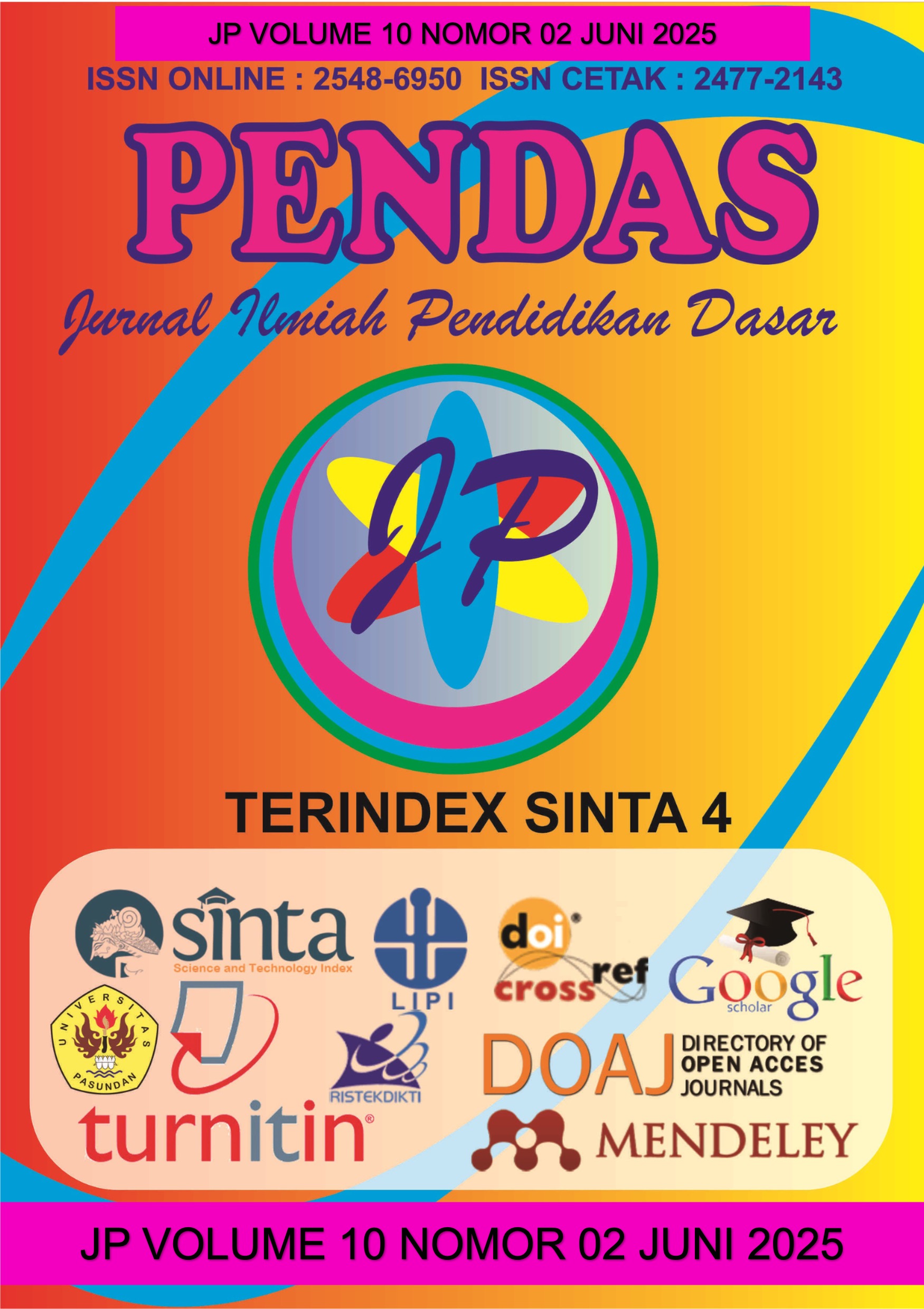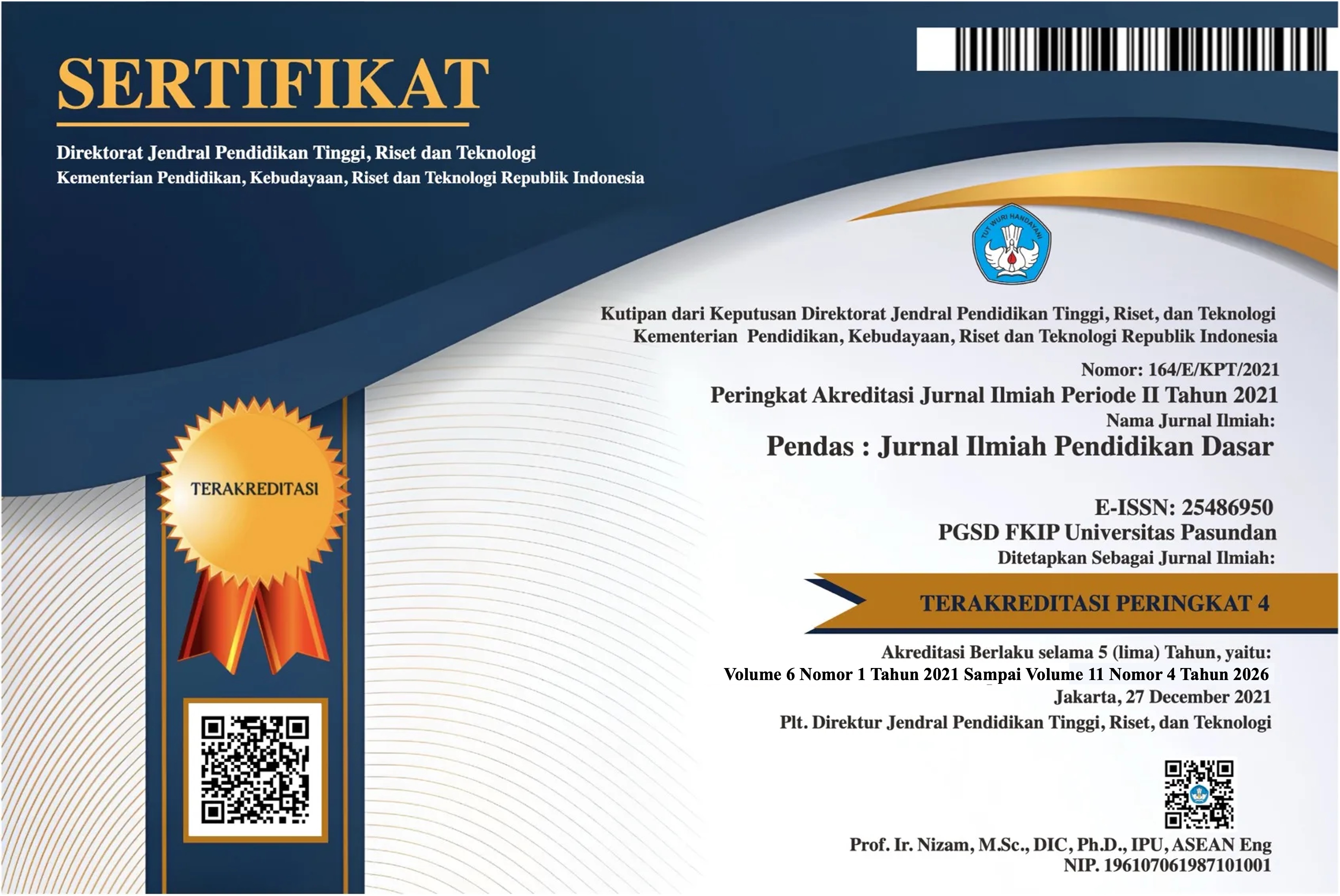PENERAPAN PENDEKATAN KONSTRUKTIVISME UNTUK MEMBANGUN PEMAHAMAN DALAM PEMBELAJARAN IPAS SISWA KELAS VI SDIT AR-RAYU
DOI:
https://doi.org/10.23969/jp.v10i02.27142Keywords:
IPAS Content sixth grade, Constructivist Approach, Building UnderstandingAbstract
This study aims to describe the implementation of the constructivist approach to
build understanding among sixth-grade students at SDIT Ar-Rayu. The
constructivist approach emphasizes that knowledge is not obtained passively but is
actively constructed by students through direct experiences, exploration, social
interaction, and reflection on the learning processes they undergo, particularly in the
IPAS subject on the six continents of the world. In this learning model, the teacher
acts as a facilitator who creates an open learning environment that supports
students’ active engagement. This study used a descriptive method with data
collection techniques including classroom observation, interviews, and
documentation throughout the learning process. With a total of 23 students, the
results showed that 87% of students became more active in the learning process,
82% demonstrated increased curiosity, and 78% were able to connect new
knowledge with previous experiences. Learning strategies such as problem-based
learning, small group discussions, experiments, and open-ended questioning
encouraged students to think critically, express their opinions, and develop more
meaningful understanding of the lesson content. In addition, 85% of students
showed improvement in social skills such as collaboration and communication. The
teacher played a key role as a facilitator in designing meaningful activities and
promoting student exploration. Therefore, it can be concluded that the consistent
and well-planned implementation of the constructivist approach is effective in
improving the quality of students' understanding and creating a student-centered
learning process.
Downloads
References
Brooks, J. G., & Brooks, M. G. (2019).
In search of understanding:
The case for constructivist
classrooms. Pearson.
Fitriani, R., & Marlina, L. (2020).
Implementasi pembelajaran
konstruktivisme dalam
meningkatkan pemahaman
siswa pada mata pelajaran
matematika. Jurnal
Pendidikan dan
Pembelajaran, 8(2), 95-108.
Handayani, D., & Pratama, A. (2023).
Pembelajaran berbasis
konstruktivisme untuk
meningkatkan partisipasi
siswa di sekolah dasar.
Jurnal Pendidikan Abad 21,
6(1), 112-123.
Ismail, H., & Nugroho, I. (2019). Peran
guru sebagai fasilitator
dalam pembelajaran
berbasis konstruktivisme.
Jurnal Pendidikan Dasar,
10(4), 45-60.
Kurniasih, E., & Sani, D. (2019).
Konstruktivisme dalam
pendidikan: Membentuk
pemahaman dan
keterampilan siswa abad 21.
Jurnal Pendidikan Abad 21,
4(2), 142-155.
Mutmainnah, F., & Andayani, S.
(2022). Pengaruh
pendekatan konstruktivisme
terhadap keterampilan
berpikir kritis siswa di SD.
Jurnal Pendidikan Dasar dan
Inovasi, 15(1), 54-67.
Rosita, R., Safitri, R. D., Suwarma, D.
M., Muyassaroh, I., & Jenuri,
J. (2023). Pendekatan
Konstruktivisme Terhadap
Peningkatan Hasil Belajar
Siswa SD. Jurnal Review
Pendidikan Dasar: Jurnal
Kajian Pendidikan dan Hasil
Penelitian, 10(3), 238–247.
Sanjaya, W. (2021). Strategi
Pembelajaran Berorientasi
Standar Proses Pendidikan.
Jakarta: Kencana.
Suparno, H. (2014). Konstruktivisme
dalam pendidikan: Teori,
konsep, dan aplikasi.
Yogyakarta: Pustaka
Pelajar.
Vygotsky, L. S. (1978). Mind in
society: The development of
higher psychological
processes. Harvard
University Press.
Downloads
Published
Issue
Section
License
Copyright (c) 2025 Pendas : Jurnal Ilmiah Pendidikan Dasar

This work is licensed under a Creative Commons Attribution 4.0 International License.



















